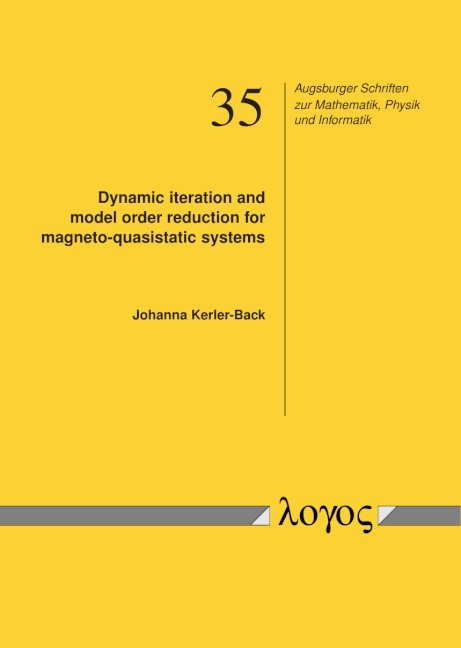
Dynamic iteration and model order reduction for magneto-quasistatic systems
Seiten
2019
Logos Berlin (Verlag)
978-3-8325-4910-7 (ISBN)
Logos Berlin (Verlag)
978-3-8325-4910-7 (ISBN)
Our world today is becoming increasingly complex, and technical devices are getting ever smaller and more powerful. The high density of electronic components together with high clock frequencies leads to unwanted side-effects like crosstalk, delayed signals and substrate noise, which are no longer negligible in chip design and can only insufficiently be represented by simple lumped circuit models. As a result, different physical phenomena have to be taken into consideration since they have an increasing influence on the
signal propagation in integrated circuits. Computer-based simulation methods play thereby a key role. The modelling and analysis of complex multi-physics problems typically leads to coupled systems of partial differential equations and differential-algebraic equations (DAEs). Dynamic iteration and model order reduction are two numerical tools for efficient and fast simulation of coupled systems.
Formodelling of low frequency electromagnetic field, we use magneto-quasistatic (MQS) systems which can be considered as an approximation to Maxwells equations. A spatial discretization by using the finite element method leads to a DAE system. We analyze the structural and physical
properties of this system and develop passivity-preserving model reduction methods. A special block structure of the MQS model is exploited to to improve the performance of the model reduction algorithms.
signal propagation in integrated circuits. Computer-based simulation methods play thereby a key role. The modelling and analysis of complex multi-physics problems typically leads to coupled systems of partial differential equations and differential-algebraic equations (DAEs). Dynamic iteration and model order reduction are two numerical tools for efficient and fast simulation of coupled systems.
Formodelling of low frequency electromagnetic field, we use magneto-quasistatic (MQS) systems which can be considered as an approximation to Maxwells equations. A spatial discretization by using the finite element method leads to a DAE system. We analyze the structural and physical
properties of this system and develop passivity-preserving model reduction methods. A special block structure of the MQS model is exploited to to improve the performance of the model reduction algorithms.
| Erscheinungsdatum | 28.06.2019 |
|---|---|
| Reihe/Serie | Augsburger Schriften zur Mathematik, Physik und Informatik ; 35 |
| Sprache | englisch |
| Maße | 145 x 210 mm |
| Einbandart | Paperback |
| Themenwelt | Mathematik / Informatik ► Mathematik ► Analysis |
| Naturwissenschaften ► Physik / Astronomie ► Elektrodynamik | |
| Schlagworte | Differential Algebraic Equations • dynamic iteration • Finite Element Method • magneto-quasistatic systems • Model order reduction |
| ISBN-10 | 3-8325-4910-2 / 3832549102 |
| ISBN-13 | 978-3-8325-4910-7 / 9783832549107 |
| Zustand | Neuware |
| Haben Sie eine Frage zum Produkt? |
Mehr entdecken
aus dem Bereich
aus dem Bereich
Band 5: Hydraulik, Stromfadentheorie, Wellentheorie, Gasdynamik
Buch | Softcover (2024)
De Gruyter Oldenbourg (Verlag)
CHF 83,90


